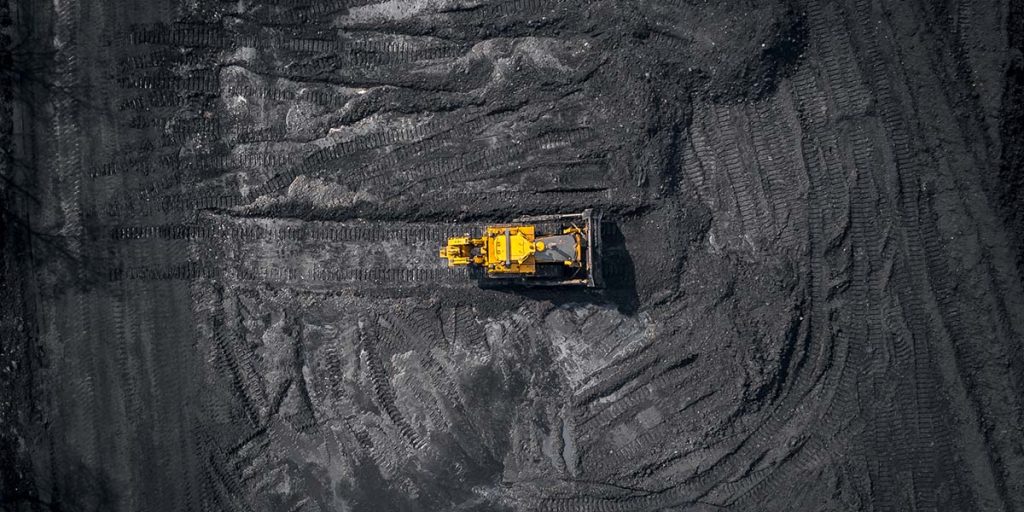The British company Ecora Resources takes royalties on mining projects. The business model gives exposure to resource extraction, but royalty companies have less risk than the mining companies themselves. Ecora has undergone a strategic repositioning that has allowed revenue and earnings to develop dramatically. The stock price had risen nicely, but has fallen some 40% again after its peak and is approaching 2020 bottoms. The company will not match the record profits of 2022 for now, but business is fine and the company is cheap by any standards. SharesUnion therefore includes 1,500 shares of Ecora Resources PLC in its portfolio at the current price of about 118 British pence (GBX), or about 1.36 euros per share.

From banking spin-off to IPO
Ecora’s roots lie in the world of London investment banking. In the 1960s, its focus was on buying up stakes in Australian oil, gas and coal mining. In 1996, the company obtained a stock market listing in London, but after the turn of the century, the coal business declined and losses accumulated. In 2013, Julian Treger took over as the new ceo and set a new strategic course. Unlike his predecessor, he was not an engineer, but a merchant banker. He decided to wind down interests in Australian coal mining and focus on metals of the future, such as cobalt. In 2021, a major milestone was reached as half of sales came from new metals. For Treger, that was the moment to make way for his successor Marc Bishop Lafleche, who, like him, was an investment banker. Lafleche fervently continued the course he had set and in October 2022 decided to change the company’s name from Anglo Pacific to Ecora Resources.
Royalties, superior business model
Royalty companies in commodities have more in common with finance companies than with mining companies. They invest in mining projects alongside mining companies, in return for which they later receive a share of the proceeds from the project in question. For mining companies, royalties tend to be more advantageous than bank financing or equity issuances because royalty financing is more flexible, long term and does not dilute profits. For investors, the advantage of royalty companies over the mining companies themselves is that the results are more stable and therefore the risks are lower. After all, royalties are paid on a project’s sales or revenue and not on profits. Operating costs remain the responsibility of the miner. With inflation high, royalty companies are much better positioned than mining companies that are seeing their profits evaporate due to higher costs.
Strategy
In recent years, Ecora has phased out most of the royalties on Australian coal projects, with only the Kestrel project remaining until 2026. The coal has been replaced by metals such as copper, cobalt, nickel, iron and uranium. The outlook for these metals is favorable because they are widely used in products of the future, such as electric vehicles, wind turbines and electricity supply infrastructure. The plan is to achieve 90% of sales with future-oriented raw materials by 2026, a percentage that should rise to 100% by 2028. The diagram below outlines the composition of the book value of the royalty portfolio in terms of exposure to different commodities.

The current portfolio
Major royalties purchased in recent years include Voisey’s Bay, a world-class Canadian cobalt mine, and Mantos Blancos, a copper mine in Chile.
The royalty on Voisey’s Bay was purchased in February 2021 for $205 million from Brazilian operator Vale, which will cede 22.8% of the project’s proceeds to Ecora until 2035.
Mantos Blancos concerns a $50 million investment in a Chilean open pit copper mining project, from which Ecora will receive 1.58% of the proceeds until 2038.
In total, the portfolio contains eighteen royalties, nine of which relate to projects that are already producing and thus providing revenue.
There are also six more royalties on projects that are being developed and will become productive within a few quarters.
Finally, there are three so-called “early stage” royalties from long-term projects whose development has yet to begin.
The table below summarizes the producing royalties.

In 2022, royalties were raised from a number of projects by mining company South32, a spinoff of Australia’s BHP. The deal involved a 2% royalty on the West Musgrave project to develop a copper and nickel mine in Western Australia and a royalty on the Santo Domingo project to develop copper and cobalt in Chile. As part of the deal, South32 became the largest shareholder in Ecora with 44 million shares representing a 17% stake.
Financial results
The success of the new strategy is undeniable. The multi-year financial statement table shows that the company was heavily into losses in 2014. Management cut costs significantly, sold some royalties and issued new shares to free up funds for new royalties, particularly in copper, iron and nickel. Thereafter, sales began to rise sharply so that from 2016 onwards black figures were again being written. Fiscal year 2020 was an exception due to the closure of the Australian Kestrel coal mine. The compulsory closure of the mine due to the corona pandemic caused a decline in sales which led to a loss below the line. Fiscal year 2022, on the other hand, again became an absolute top year, although this needs explanation.

Fiscal year 2022
Portfolio revenue covered a record $143 million, up from $86 million in 2021. Net profit came to $95 million, which was almost triple that of 2021 – which was also a record year. Abundant cash inflows reduced net debt from $90 million to $36 million. The reason for the exceptionally good results was that coal prices tripled and the Australian state of Queensland adjusted royalty rates upward. The revenue contribution from Kestrel, the only coal mine remaining in the portfolio, exploded 123% to $107 million. More than two-thirds of the total portfolio revenue of $143 million thus came from Kestrel.

By the way, in the meantime the coal price has fallen again as hard as it had risen, so that, according to analysts, revenue will fall 40% in 2023 and ebitda will reach $74 million. Nevertheless, even then the stock is still cheap, especially when compared to other royalty companies.
Comparison with industry peers
Ecora is an odd duck in the royalty world because almost all of the players in the industry focus on precious metals, especially gold, and because almost all of them are Canadian. Moreover, with its 14 employees, Ecora is also much smaller. The table below provides key data on the major players in the sector and their valuation multiples. Ecora is by all standards by far the cheapest, although the difference is magnified because 2022 was an exceptionally good year.

Conclusion
Ecora is well positioned for the future.
The management team is knowledgeable, only takes royalties on good-yielding projects in safe jurisdictions, is in the right metals, and still has enough royalties behind it on projects being developed now to become productive in the future.
Coal miner Kestrel will no longer contribute from 2026, but the six mining projects under development will more than make up for the lost revenue by then.
Now that the price has fallen almost all the way back, the stock is unquestionably cheap and, moreover, the risks are much lower than from mining companies themselves.
While Ecora is much smaller than its industry peers, this also makes it more effective and allows the company to strike quickly when a good deal presents itself.
Ecora has a very strong position in metals necessary for sustainable products, such as electric vehicles, wind turbines and electricity infrastructure.
Sooner or later, Ecora will have to enter the picture of ESG investors who collectively manage a huge asset base that will have to start finding its way to a limited number of companies that meet sustainability criteria.
We expect that the share price can return to its old high of GBx 230 within a few years.
We therefore include 1,500 shares of Ecora in the portfolio of SharesUnion at the current price of about 118 British pence (GBX), or 1.36 euros per share.
The author holds a position in Ecora.
Fundamentals Ecora Resources
ISIN code: GB0006449366
Ticker: ECOR
Scholarship:
London and Toronto
Highest rate in 52 weeks: GBP 184
Lowest rate in 52 weeks: GBP 110
Share price at time of writing: GBP 119
Number of shares: 234 million
Stock market value: $380 million
Enterprise value: $421 million
Price-to-earnings ratio: 3.66x
Price / Net Asset Value: 0.75x
Dividend yield: 5.5%
Website: www.ecora-resources.com


